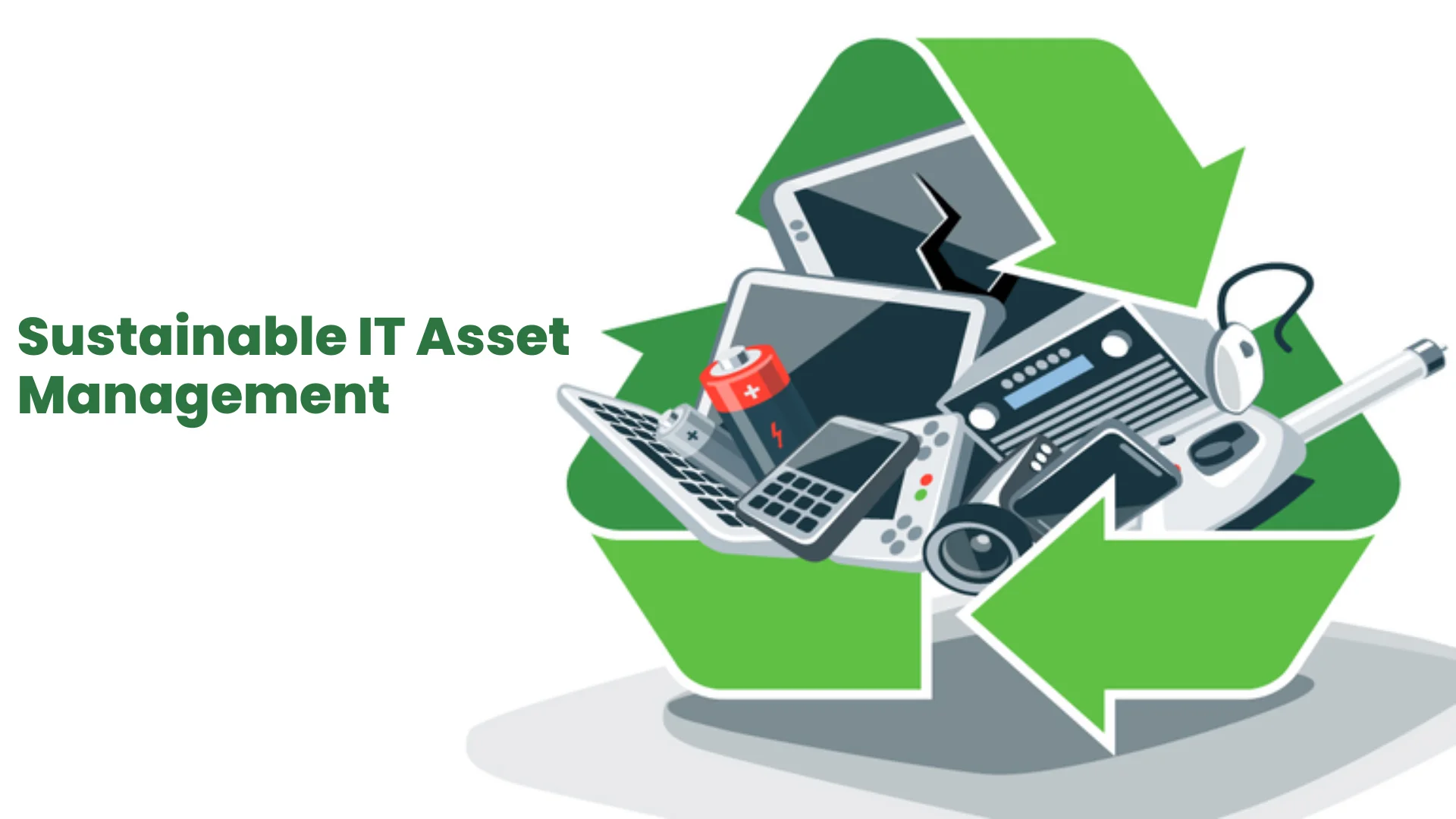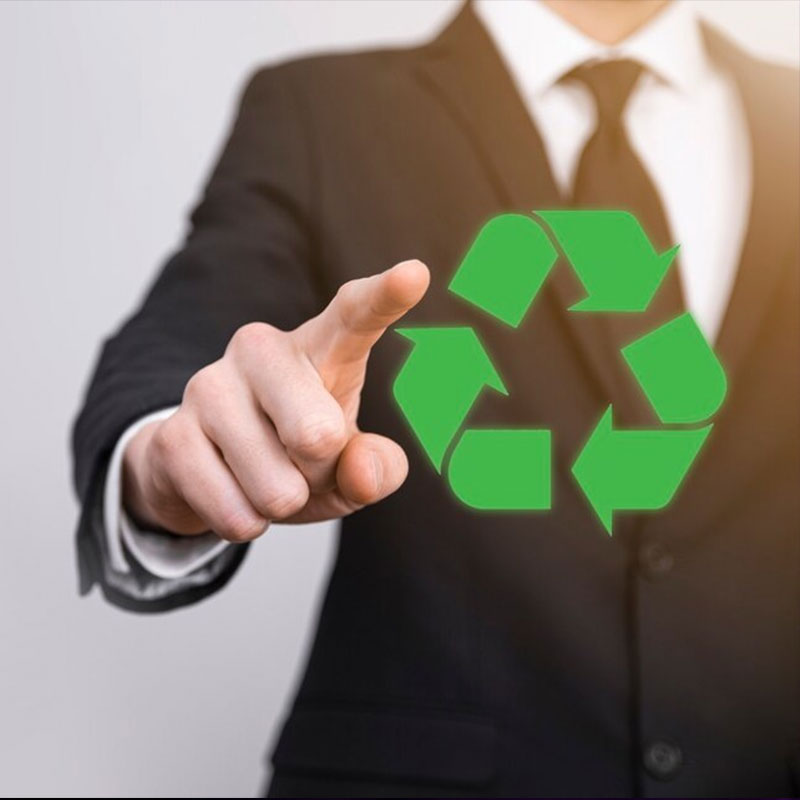
Posted on Saturday, Sep 30th, 2023
Upcycling Old IT Assets for a Greener Future
Organizations frequently update their IT infrastructure to be competitive and meet the expectations of a dynamic marketplace in today's quickly expanding technology landscape. However, this rapid cycle of IT equipment replacement leads to the accumulation of outdated and surplus assets.
To address this challenge and promote sustainability, many organizations turn to IT Asset Recycling Programs and IT Asset Recovery Solutions. In this blog, we'll explore the benefits and importance of sustainable IT Asset Management, delve into IT Asset Recovery strategies, and shed light on the role of IT Asset Recycling Programs in fostering a greener, more responsible approach to technology disposal.
Sustainable IT Asset Management: A Necessity
As technology evolves at breakneck speed, organizations often find themselves with a surplus of outdated IT equipment. Properly managing these assets is critical for several reasons:1. Environmental Impact
Electronic waste, or e-waste, is a growing concern. Discarding IT equipment improperly can lead to pollution, resource depletion, and health hazards. Sustainable IT Asset Management ensures responsible disposal.2. Data Security
IT assets often contain sensitive data. Failing to manage the disposal of these assets properly can lead to data breaches and legal consequences. Secure IT asset recovery solutions are essential for data protection.3. Financial Efficiency
Discarding IT equipment without considering its residual value represents a missed opportunity. Proper IT Asset Recovery can recoup some of the initial investment, helping to offset the costs of new technology.The Importance of IT Asset Recovery Solutions
IT Asset Recovery Solutions play a pivotal role in the lifecycle of IT equipment. These solutions encompass the identification, collection, refurbishment, and redistribution or resale of surplus or obsolete IT assets. The benefits of implementing such solutions are substantial:1. Cost Savings
One of the primary benefits of IT Asset Recovery is cost savings. Recovering value from surplus assets helps organizations offset the expenses associated with technology upgrades. Funds generated from the sale or reuse of recovered assets can be reinvested in new technology or other business initiatives.2. Environmental Responsibility
Sustainable IT Asset Management is essential for reducing the environmental footprint of IT equipment. Recovery solutions promote responsible disposal practices, ensuring that assets are refurbished or recycled in an environmentally friendly manner. This reduces electronic waste and its associated environmental impact.3. Data Security
Data security is a paramount concern in today's digital landscape. IT Asset Recovery Solutions include data sanitization and destruction processes to ensure that sensitive information is not compromised during the disposal process. This is particularly crucial for organizations that handle confidential data or operate in highly regulated industries.4. Legal Compliance
Various regulations, such as the General Data Protection Regulation (GDPR) and the Health Insurance Portability and Accountability Act (HIPAA), require organizations to protect sensitive data during disposal. Adhering to these regulations is not only a legal obligation but also critical for maintaining the trust of customers and stakeholders.Sustainable IT Asset Management in Action
To illustrate the significance of sustainable IT Asset Management, consider the following scenario:An organization, XYZ Inc., decides to upgrade its server infrastructure to enhance performance and scalability. This decision leads to a surplus of older servers, which, if not managed properly, could end up as electronic waste.
However, XYZ Inc. chooses to implement IT Asset Recovery Solutions as part of its sustainable IT asset management strategy. The process involves:
1. Asset Identification: XYZ Inc. catalogues all surplus servers, including their specifications, age, and condition.
2. Data Sanitization: Sensitive data on the servers is securely erased to prevent any data breaches.
3. Asset Recovery: The company partners with an IT asset recovery provider, which assesses the servers for refurbishment potential.
4. Resale or Redistribution: Recovered assets that can be refurbished are either sold to recoup some of the costs or donated to nonprofit organizations or educational institutions.
In this scenario, XYZ Inc. not only reduces the environmental impact of IT disposal but also recovers value from its surplus assets. Moreover, the organization's commitment to responsible IT asset management enhances its reputation as an environmentally conscious and socially responsible entity.
The Role of IT Asset Recycling Programs
IT Asset Recycling Programs form an integral part of sustainable IT asset management. These programs focus on recycling IT equipment at the end of its useful life, preventing it from ending up in landfills or incinerators. Key aspects of such programs include:1. Environmental Stewardship
IT Asset Recycling Programs prioritize environmental protection by diverting electronic waste from traditional disposal methods that can harm the environment. Recycling IT equipment ensures that valuable resources, such as metals and plastics, are recovered and repurposed.2. Responsible Disposal
Responsible disposal is at the core of IT asset recycling. It involves the proper dismantling and recycling of IT equipment while adhering to environmental regulations and best practices. Hazardous components, like batteries and certain chemicals, are handled with care to prevent harm to the ecosystem.3. Resource Conservation
Recycling IT assets reduces the demand for raw materials required to manufacture new electronics. This resource conservation aspect contributes to a more sustainable and circular economy, which is essential for long-term environmental health.4. Compliance with Regulations
Many regions have regulations in place governing the disposal of electronic waste. IT Asset Recycling Programs ensure that organizations comply with these regulations, mitigating legal risks and promoting responsible stewardship.How Blue Summit guides you?
Blue Summit, like many other companies in the IT asset recycling industry, can help organizations manage their outdated or no longer needed IT equipment in an environmentally responsible and cost-effective manner. Here are some ways Blue Summit might assist with IT asset recycling:1. Asset Evaluation
Blue Summit assesses your organization's IT assets, including computers, servers, networking equipment, and peripherals, to determine which items can be recycled, refurbished, or resold.2. Data Sanitization and Destruction
We ensure that sensitive data is properly wiped or destroyed. Blue Summit provides data sanitization services to protect your organization's information from falling into the wrong hands.3. Refurbishment and Resale
If some of your IT equipment is still in good condition, we refurbish and resell these items, helping you recoup some of your investment.4. Recycling
For equipment that can no longer be used, we manage the recycling process to minimize environmental impact. This includes recycling components and materials according to local and international regulations.5. Logistics and Transportation
We handle the logistics of collecting your IT assets, whether it's from a single location or multiple sites. We also arrange for transportation to their facilities.6. Certifications and Compliance
Blue Summit is certified for industry standards like R2 (Responsible Recycling) and helps your organization meet compliance requirements related to IT asset disposal.7. Asset Reporting
Provides detailed reports on the disposition of your IT assets, including what was recycled, refurbished, or resold, can be valuable for compliance and auditing purposes.8. Sustainability and CSR
Working with Blue Summit for IT asset recycling align with your company's sustainability and corporate social responsibility (CSR) goals, as we emphasize environmentally responsible practices.9. Financial Benefits
Proper IT asset recycling often yield financial benefits through cost savings, tax incentives, or revenue generation from asset resale.10. Customized Solutions
We offer tailored solutions to meet your organization's specific needs and goals regarding IT asset recycling.Conclusion
Sustainable IT Asset Management is no longer an option but a necessity in today's technology-driven world. IT Asset Recovery Solutions, including responsible disposal and data security measures, are integral to this management approach. Additionally, IT Asset Recycling Programs play a crucial role in minimizing the environmental impact of IT equipment disposal.As organizations continue to embrace sustainability as a core value, they must incorporate these practices into their IT asset management strategies. By doing so, they can achieve cost savings, reduce their environmental footprint, enhance data security, and demonstrate their commitment to responsible. corporate citizenship. Ultimately, sustainable IT asset management contributes to a greener, more sustainable future for us all.
If your organization is located in London, we kindly invite you to reach out to us todayIT Asset Recycling to initiate the process of IT asset recycling. By doing so, you can actively participate in our shared mission to effect positive change in our community.
Blue Summit, a pioneering leader in the realm of environmentally responsible IT asset disposal, has established strategic partnerships with notable organizations such as OUR BARN, and currently operates within esteemed locations including the Digital Dock, London Museum of Water and Steam, and the London Borough of Hounslow. We take immense pride in our adept execution of laptop recycling initiatives at the present rate, and our unwavering commitment is directed towards reaching even loftier accomplishments in the future.
REFER TO OTHER RELEVANT CONTENTS

Upcycling Old IT Assets for a Greener Future
Organizations frequently update their IT infrastructure to be competitive and meet the expectations of a dynamic marketplace in today's quickly expanding technology landscape. However, this rapid cycle of IT equipment replacement leads to the accumulation of outdated and surplus assets. To address this challenge and...
read more
Recycling
A necessary stage of the IT asset lifetime is the retirement of underutilized or outdated assets. Failure to properly dispose of IT equipments can have implications for your operations, data, the environment, and a messy work-place. Get a “Recycling Certificate” as a part of IT Equipment disposal process.
read more







